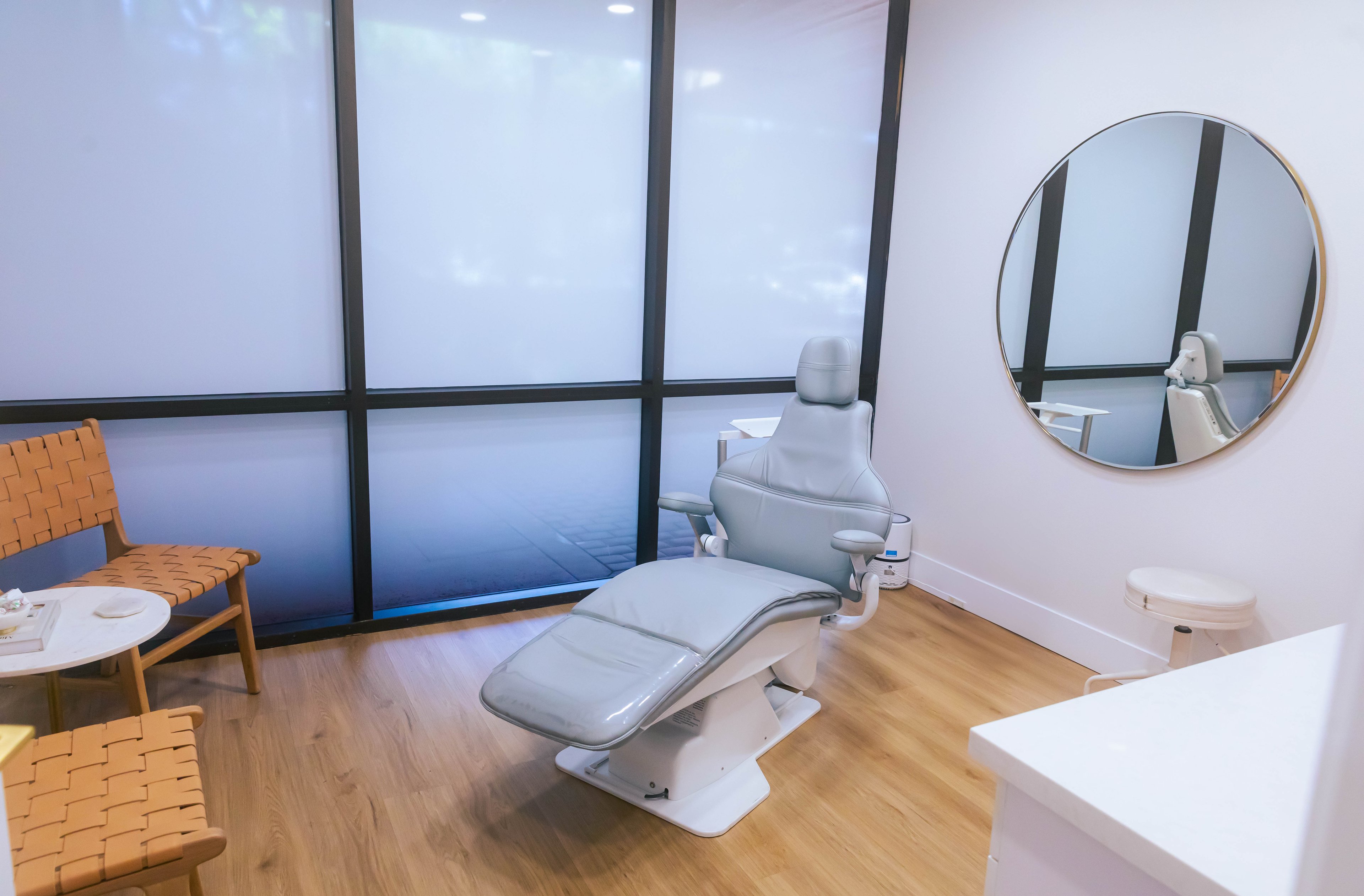Medspa • Perspective
6 Steps to Turn Your Medical Aesthetic Practice into a Scalable Business

By Jessica Hunter, Founder, Hunter Consulting . Nov.20.2025
Share Article
Laying the financial, operational, and talent foundation today so you actually have options tomorrow
Why I Obsess Over Foundations
I spend my days with insanely smart people — surgeons, NPs, PAs, RNs, practice owners — who are brilliant at patient care and results. What most of them don’t get taught is how to build an actual business.
And I don’t say that as a criticism. The medical aesthetics industry is full of what I lovingly call “accidental entrepreneurs.” You were great at injections, lasers, skin, and outcomes. Suddenly, you’re the owner of a multi-million-dollar aesthetic or wellness practice… with no roadmap for how to scale it, replicate it, or sell it one day.
I’ve spent more than a decade inside aesthetic practices and med spas, starting as a consultant for Allergan. Back then, Allergan held the majority of market share, and they realized something important: a lot of their best customers were struggling operators. They were clinically excellent, but the business side — financials, compensation models, service mix, provider productivity, profitability — wasn’t dialed in.
That’s when I got hooked. Because once you understand the business foundation — not just revenue, but margin, repeatability, provider mix, time allocation, scalability — the entire future of that business changes. You stop owning “a job,” and you start owning an asset.
That distinction is everything.
The Endgame Isn’t Always Exit… But You Want the Option
Here’s what I tell new and established med spa owners: You deserve options.
You deserve to decide:
Do I scale to multiple locations?
Do I pull myself a little more out of the day-to-day and let this thing run without me?
Do I position for private equity interest or a strategic buyer in 5–10 years?
Do I sell completely and walk away, or stay on in a limited capacity?
Those are real choices. But you don’t magically “get” those choices at year eight. You build toward them from day one.
When we take on a new client at Hunter Consulting, every single engagement starts in the same place: with full financial visibility.
No one gets to skip this step. Ever.
Step 1: Know Your Business Like an Investor Would
Here’s what I require before we move one inch forward:
Full P&L (profit and loss) for the last two years
Real numbers, not guesses.
Year-to-date service-level detail
For every single service you offer:
What is it?
How many of those did you do?
What did you charge?
Who performed it?
How long did it take?
Provider capacity and compensation
How many providers do you have?
How are they being paid?
How are they spending their time?
What services are actually driving their revenue?
This data tells me:
Where profit is really coming from (it’s almost never where owners assume).
Where you’re overleveraged (one injector doing 80% of your total neurotoxin revenue is not a business, it’s a liability).
Where you have room to add strategic services.
How realistic your growth story actually is.
Here’s the truth: if you can’t clearly explain your service mix, provider productivity, and margins today, then you’re not ready for multiple locations, and you’re certainly not ready for outside capital.
Investors don’t buy vibes. They buy clarity.
Step 2: Build Beyond Yourself
If you’re the primary revenue driver, you haven’t built a business — you’ve built a very demanding job for yourself.
One of the first things we talk about when someone says, “I want to be acquired one day,” is provider diversification.
Here’s the benchmark I coach toward: The founding provider should be generating less than 50% of total revenue. Why? Because if 70% of the revenue walks out the door when you walk out the door, you’re not sellable. You’re not investable. There’s no continuity.
To build a business that someone would want to buy, you need:
Multiple providers delivering high-value services.
Clearly defined scopes for each provider.
Compensation plans that make sense for both them and the business.
Documented protocols so they can be onboarded, ramped, and replicated.
This is usually a mindset shift. Many owners are proud to be “the one everyone comes to.” I get why, but it’s also what keeps you stuck.
If you want to scale, you cannot be your only product.
Step 3: Systematize the Way You Work
This is the part where owners either lean in or mentally check out, and I need you to lean in.
If you want to be acquired or even just open a second location without burning down your life, you need replicable systems.
Ask yourself:
Could someone else step in and run this without me physically being there every day?
Could this entire patient journey (booking, intake, consult, treatment, checkout, follow-up) be copied in another ZIP code without me rebuilding it from scratch?
That’s what investors are looking for because that’s what multi-location success requires. This is why I care so much about operational infrastructure and technology. Because here’s the reality: You cannot scale chaos.
When we come into a practice, we evaluate whether your current platform — your EMR, booking system, checkout flow, and follow-up and retention workflows — is actually supporting your growth plan.
If it’s not, we fix it. Quickly. And “fix it” does not mean “throw five more disconnected tools on top.” A fragmented tech stack (one system for charting, one for booking, one for marketing emails, one for POS, one for memberships, spreadsheets for reporting…) is one of the biggest blockers to growth.
If systems don’t speak to each other, you can’t scale without pain.
If systems can’t be replicated at your next location, you’re not plug-and-play.
If systems can’t produce clean, extractable reporting, you can’t tell your story to a buyer.
That last part matters more than most owners realize.
Step 4: Clean, Consistent, Reproducible Reporting
Let me say something that sounds boring, but decides your valuation: reporting.
An investor wants to see that you understand:
Where revenue is coming from and why.
Which service lines are most profitable (not just most popular).
The balance of recurring vs. volatile revenue.
How consistent your book of business is month over month.
They do not just want top-line revenue. They want predictable revenue with a healthy margin.
When we set up a platform for a client or rebuild one that they “stood up fast and meant to fix later”, we’re not just flipping features on and calling it a day.
We are:
Creating service categories the right way so reporting rolls up clean.
Setting up providers and permissions correctly.
Mapping consult → treatment → checkout so we can track conversion and attach rate.
Building automated follow-up and retention workflows that don’t depend on a human remembering to send a text.
That’s why I say technology is not optional. A good platform doesn’t just let you book appointments. It supports the entire revenue engine — and proves it on paper.
If you want to exit later, you can’t hand over a mess.
Step 5: Hire for Capacity, Not Panic
Here’s another hard truth: You can’t scale on burnout. Many owners wait until they’re underwater to hire, which makes hiring reactive and rushed. That’s when you end up with the wrong injector, the wrong front desk experience, or zero bandwidth to onboard anyone properly.
Inside Hunter Consulting, we treat talent as a core pillar — not an afterthought. We have a dedicated talent partner who recruits, screens, and onboards for our clients. That includes injectors, providers, practice managers, and, when needed, medical directors.
Why? Because most owners don’t have time to do this well. But if you don’t do it well, you cap your capacity, and if your capacity is capped, your valuation is capped.
The right team in the right seats with the right comp model is part of your business foundation. It’s not “HR stuff.” It’s an exit strategy.
Step 6: Marketing Comes Last on Purpose
This one surprises people. We do not start with marketing. Ever. Marketing is not the first lever. Marketing is the amplifier.
If your service mix isn’t profitable, your provider model isn’t scalable, your systems are broken, and your patient experience isn’t consistent, all marketing does is drive more volume into something that isn’t ready to hold it.
Once the core is healthy — financially, operationally, and structurally — then we build the marketing strategy to grow what’s already working.
That’s how you get sustainable demand instead of “one-month Botox promos” that spike revenue and then fall off a cliff.
The Most Common Red Flags (AKA: Why Some Practices Can’t Sell)
If you’re thinking about long-term growth, investment, or exit, here are three immediate red flags you should address now:
You are the revenue: You personally generate the majority of the money. If you’re out, the business collapses. That’s a problem.
You have no repeatable system: Your processes live in people’s heads, not in documented workflows and tech. That’s not buyable.
Your revenue is overly concentrated: If 80% of your revenue comes from one service line (for example, neurotoxin only), you are at risk. You need service diversification and recurring, margin-healthy revenue streams.
If any of those apply to you, you don’t need to panic. You just need to get intentional now, not five years from now.
Where the Industry Is Going (and Why I’m Excited)
The med spa of the future is not “just Botox.” It’s aesthetics, wellness, and longevity.
We’re watching practices successfully layer in things like peptide programs, hormone support, and metabolic health alongside injectables, skin treatments, and device-based services. That evolution matters for two reasons:
It creates stickier, more holistic patient relationships.
It builds diversified, recurring, high-margin revenue.
That combination is unbelievably powerful.
The practices that can deliver safe, ethical, full-body care not just “look younger,” but “feel better, function better, sustain results longer” are going to dominate the next decade.
And those will be the practices buyers chase.
Final Thought: You Can Absolutely Do This
I don’t believe in scare tactics. I believe in clarity. You do not need to be a private equity roll-up. You do not need to have 10 locations. You do not need to sell.
But you do deserve to operate a business with options.
That means:
You understand your numbers.
You’ve built beyond yourself.
You have systems that can be replicated.
Your revenue is healthy, not just high.
You’re surrounded by the right people.
That’s the work. That’s the foundation. And that’s exactly what we build every single day.
Sign up for weekly blog updates.
